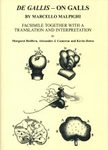By: Maura C Flannery(Author)
325 pages, 42 b/w photos and b/w illustrations
Spanning five centuries, In the Herbarium provides an erudite history of herbaria and highlights their value in today's world of climate change and biodiversity loss.
![In the Herbarium In the Herbarium]()
Click to have a closer look
About this book
Customer reviews
Biography
Related titles
About this book
Collections of preserved plant specimens, known as herbaria, have existed for nearly five centuries. These pressed and labelled plants have been essential resources for scientists, allowing them to describe and differentiate species and to document and research plant changes and biodiversity over time – including changes related to climate.
Maura C. Flannery tells the history of herbaria, from the earliest collections belonging to such advocates of the technique as sixteenth-century botanist Luca Ghini, to the collections of poets, politicians, and painters, and to the digitization of these precious specimens today. She charts the growth of herbaria during the Age of Exploration, the development of classification systems to organize the collections, and herbaria's indispensable role in the tracking of climate change and molecular evolution. Herbaria also have historical, aesthetic, cultural, and ethnobotanical value – these preserved plants can be linked to the Indigenous peoples who used them, the collectors who sought them out, and the scientists who studied them.
This book testifies to the central role of herbaria in the history of plant study and to their continued value, not only to biologists but to entirely new users as well: gardeners, artists, students, and citizen-scientists.
Customer Reviews
Biography
Maura C. Flannery is professor emerita of biology at St. John’s University, New York, and a research affiliate in the A. C. Moore Herbarium at the University of South Carolina. She is the author of two previous books and a blog. She lives in Aiken, SC.
By: Maura C Flannery(Author)
325 pages, 42 b/w photos and b/w illustrations
Spanning five centuries, In the Herbarium provides an erudite history of herbaria and highlights their value in today's world of climate change and biodiversity loss.
"We should treasure herbaria, in biologist Maura Flannery's spirited retelling, not simply because of the stories they tell about plants, but because of the stories they tell about the individuals who assembled them [...] The preserved 'hidden' gardens [...] help provide the intellectual underpinning that adds coherence to our experience of nature's botanical treasures."
– Laurence A. Marschall, Natural History
"An enchanting travelogue ranging across centuries of plant collecting, In the Herbarium is also an urgent reminder of the value of natural history collections to science, the humanities, and art."
– Yota Batsaki, Dumbarton Oaks
"In this engaging, never-before-told story, Maura Flannery shows us how the herbarium has been at the center of our centuries-long quest to understand the world of plants."
– Peter Crane, author of Ginkgo and president, Oak Spring Garden Foundation
"Maura Flannery's love of all things botanical permeates through her writing, creating a story of botany past, present, and future seen through the lens of the herbarium."
– Caroline Cornish, Royal Botanic Gardens, Kew
"A stimulating and informative book to be read (and re-read) from cover to cover as a source of enjoyment, enlightenment and inspiration."
– D. S. Ingram, joint lead author/editor of Science and the Garden
"A very useful and timely overview of the long history of engagement with botanical knowledge."
– Vassiliki Betty Smocovitis, author of Unifying Biology: The Evolutionary Synthesis and Evolutionary Biology


































